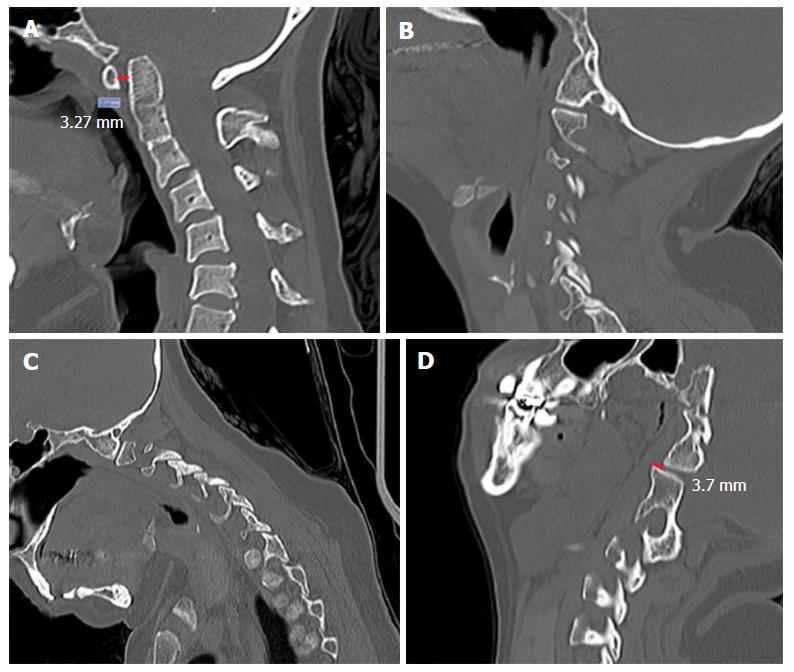Copyright
©The Author(s) 2017.
World J Orthop. Mar 18, 2017; 8(3): 271-277
Published online Mar 18, 2017. doi: 10.5312/wjo.v8.i3.271
Published online Mar 18, 2017. doi: 10.5312/wjo.v8.i3.271
Figure 3 Forty-year-old woman with a tonsilar herniation of 5 mm and basilar invagination.
Noted that she also had atlas assimilation and a congenital C23 fusion A, B and C: Pre-operative dynamic imaging, showing a atlanto-dental interval of 3.27 mm, but no signs of facet dislocation in flexion or in extension (B and C); D: Sagittal computed tomography scan obtained after some months after posterior fossa decompression showing an evident facet joints dislocation (the assimilated lateral mass of C1 was dislocated posteriorly over the superior facet joint of C2). She had some symptoms of dizziness and cervical pain when flexing the neck and an occipto-cervical fixation was proposed but the patient declined surgical treatment because she was not doing well with depression and mood disorders.
- Citation: da Silva OT, Ghizoni E, Tedeschi H, Joaquim AF. Role of dynamic computed tomography scans in patients with congenital craniovertebral junction malformations. World J Orthop 2017; 8(3): 271-277
- URL: https://www.wjgnet.com/2218-5836/full/v8/i3/271.htm
- DOI: https://dx.doi.org/10.5312/wjo.v8.i3.271









